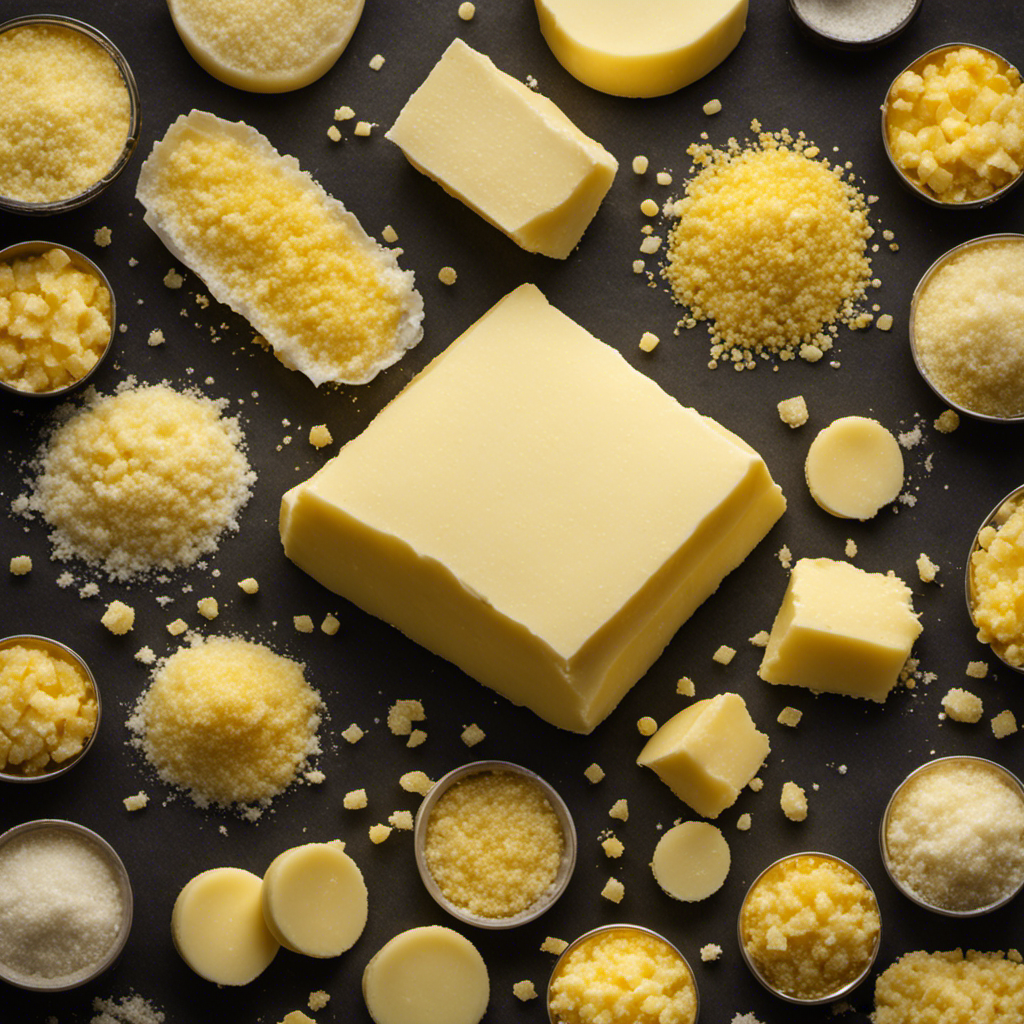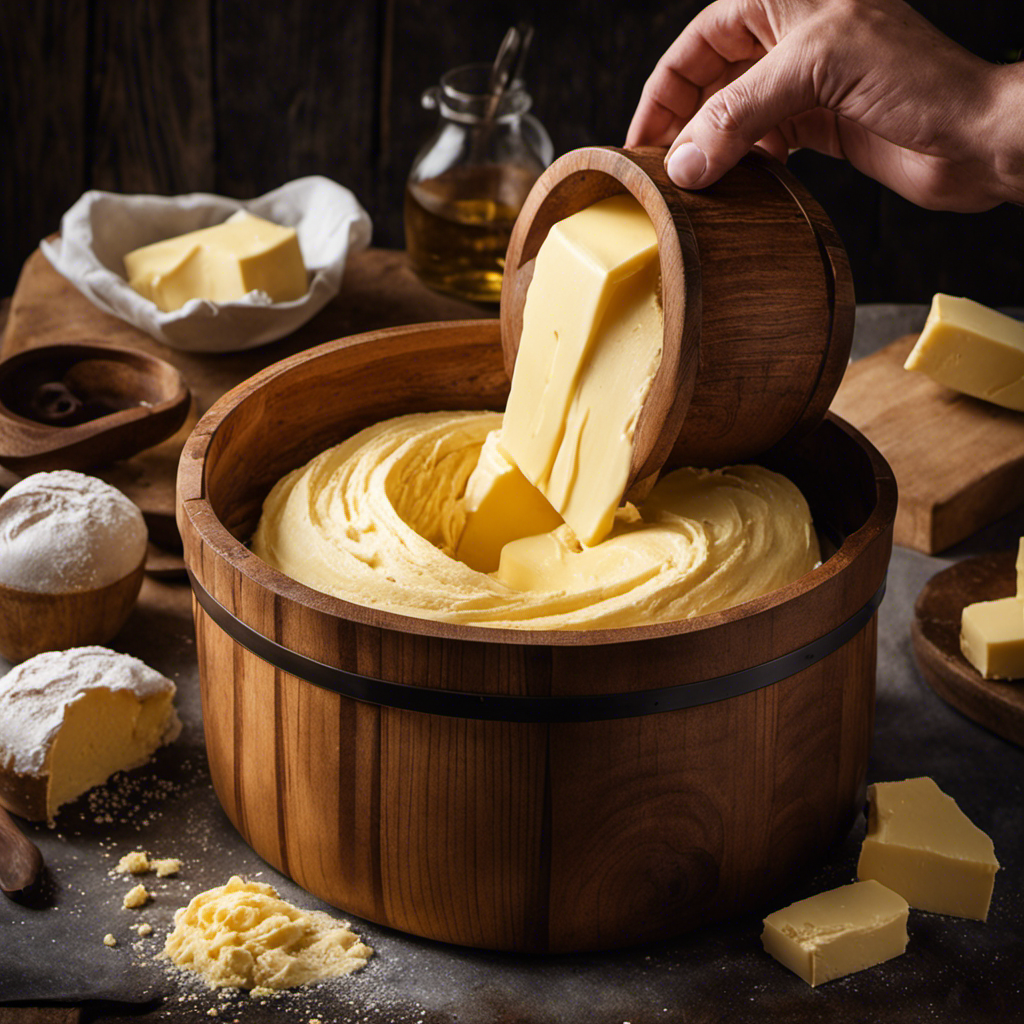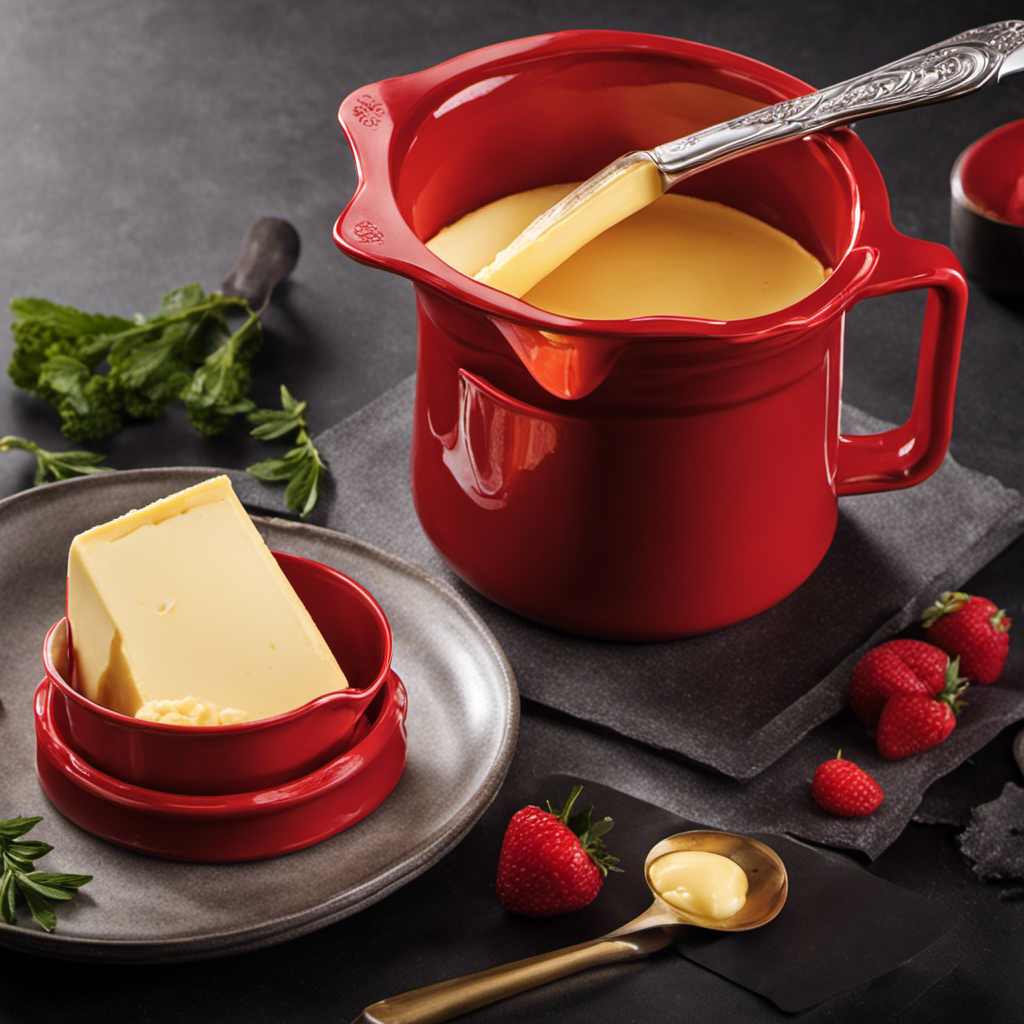As a lot of home cooks do, I frequently use unsalted butter when baking. However, the question remains: how much salt is needed to attain the ideal flavor balance?
In this article, I will guide you through the science behind adding salt to unsalted butter and provide practical tips for controlling salt levels in your baked goods.
With evidence-based information and easy-to-follow instructions, you’ll be able to confidently use unsalted butter in your recipes without sacrificing taste.
Key Takeaways
- Salt enhances flavors and brings out richness in dishes.
- Salt stabilizes unsalted butter, giving it a firmer texture.
- Using unsalted butter gives better control over the saltiness of a dish.
- Adjust salt amounts based on taste preference and other ingredients.
Why Use Salted Butter Instead
If you’re looking for a way to add more flavor to your dishes, you might want to consider using salted butter instead of unsalted butter.
While unsalted butter is commonly used in baking to have better control over the salt content, there are several reasons why salted butter can be a great choice for cooking.
First, salted butter already has salt incorporated into it, which means it adds a burst of savory flavor to your recipes without the need to add extra salt. This can enhance the taste of your dishes, especially savory ones like sauces or sautés.
Additionally, using salted butter can save you time and effort since you don’t have to worry about adding salt separately.
Understanding Salted Vs. Unsalted Butter
To understand the difference between salted and unsalted butter, you’ll need to know how the presence of salt affects the flavor and versatility of this dairy product.
- Salted butter has a distinct salty taste that can enhance the flavor of certain dishes.
- Unsalted butter has a neutral flavor, allowing the other ingredients in a recipe to shine.
- Using unsalted butter gives you better control over the saltiness of your dish.
While salted butter can be great for spreading on bread or adding a savory kick to dishes like sauces or mashed potatoes, unsalted butter offers several benefits:
- Versatility: Unsalted butter can be used in both sweet and savory dishes, making it a staple ingredient in baking and cooking.
- Control over flavor: By using unsalted butter, you have complete control over the amount of salt in your recipe, allowing you to customize the taste according to your preference.
- Consistency: Using unsalted butter ensures that the salt content doesn’t vary from brand to brand, resulting in consistent results in your recipes.
If a recipe calls for unsalted butter and you only have salted butter on hand, you can easily substitute it by reducing the amount of added salt in the recipe. For every 1/2 cup (1 stick) of salted butter, you can reduce the added salt by 1/4 teaspoon.
The Science Behind Adding Salt to Unsalted Butter
When you add salt to plain butter, it enhances the flavors and brings out the richness in your dishes.
But did you know that salt also plays a crucial role in butter preservation? Salt acts as a natural preservative by inhibiting the growth of bacteria. It helps extend the shelf life of butter and prevents spoilage.
Additionally, salt has an impact on the texture of unsalted butter. Without salt, butter can become too soft and lose its structure, making it difficult to spread or use in baking. The addition of salt helps to stabilize the butter, giving it a firmer texture and making it easier to work with.
How Much Salt to Add for Different Recipes
For different recipes, you’ll want to make sure you add the right amount of salt to enhance the flavors without overpowering the dish. When it comes to savory dishes, finding the perfect salt ratio is crucial.
Here are some general guidelines to help you achieve the right balance of flavors:
-
For soups and stews: Start with 1 teaspoon of salt for every 4 cups of liquid. Adjust according to your taste preference.
-
For roasted meats: Use about 1/2 teaspoon of salt per pound of meat. This will help to enhance the natural flavors of the meat without making it overly salty.
-
For pasta and rice dishes: Start with 1/2 teaspoon of salt per cup of uncooked pasta or rice. Adjust as needed based on the other ingredients in the dish.
As for bread making, salt is essential for both flavor and texture. A common recommendation is to use about 2% of the flour weight in salt. So, if you’re using 500 grams of flour, you would need 10 grams of salt.
Tips for Controlling Salt Levels in Baked Goods
If you’re looking to control the salt levels in your baked goods, try using unsalted butter instead of salted butter. Salted butter already contains salt, which can affect the overall taste and saltiness of your recipe.
By using unsalted butter, you have more control over the amount of salt in your baked goods. However, it’s important to note that eliminating salt completely may result in bland flavors.
To balance the flavors in low salt baking recipes, you can use salt substitutes specifically designed for reduced sodium baked goods. These substitutes, such as potassium chloride or sea salt alternatives, can provide a similar taste without the sodium content.
Experiment with different amounts to find the right balance for your recipes and achieve delicious, low sodium baked goods.
Frequently Asked Questions
Can I Substitute Unsalted Butter for Salted Butter in a Recipe?
Yes, you can substitute unsalted butter for salted butter in a recipe. Just be aware that you’ll need to adjust the amount of salt in the recipe accordingly to maintain the desired level of seasoning.
How Does Adding Salt to Unsalted Butter Affect the Flavor?
Adding salt to unsalted butter enhances the flavor by balancing the sweetness and adding a savory note. It can be used for baking purposes, but it’s important to adjust the salt amount in the recipe accordingly.
Does Salted Butter Have a Longer Shelf Life Compared to Unsalted Butter?
Salted butter does not necessarily have a longer shelf life than unsalted butter. However, the addition of salt can act as a preservative, inhibiting bacterial growth. It’s essential to consider this when substituting in recipes.
Can I Use Unsalted Butter for Savory Dishes?
Yes, you can use unsalted butter for savory dishes. While it lacks the flavor of salted butter, it allows you to control the saltiness of your dish. Unsalted butter is also commonly used in baking for better control over the overall flavor.
Are There Any Health Benefits to Using Unsalted Butter Over Salted Butter?
Using unsalted butter can have health benefits because it allows you to control the amount of salt in your dishes. Additionally, it gives you the freedom to adjust the flavor profile according to your personal preferences.
Conclusion
In conclusion, adding salt to unsalted butter is like adding a pinch of magic to your recipes. It enhances the flavors and balances the sweetness, taking your baked goods to a whole new level of deliciousness.
By understanding the science behind it and following the right measurements, you can become a master in controlling salt levels in your creations.
So go ahead, grab that unsalted butter, sprinkle in some salt, and let your culinary adventures begin! Your taste buds will thank you.










